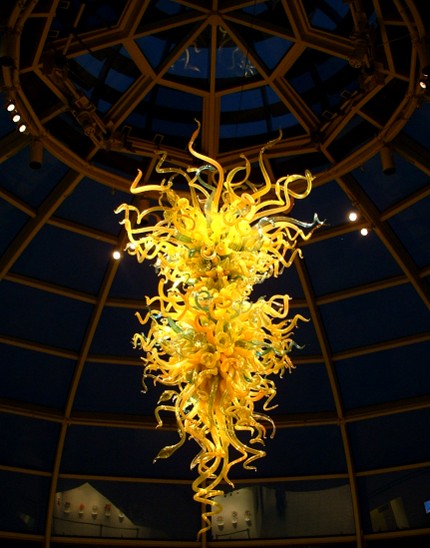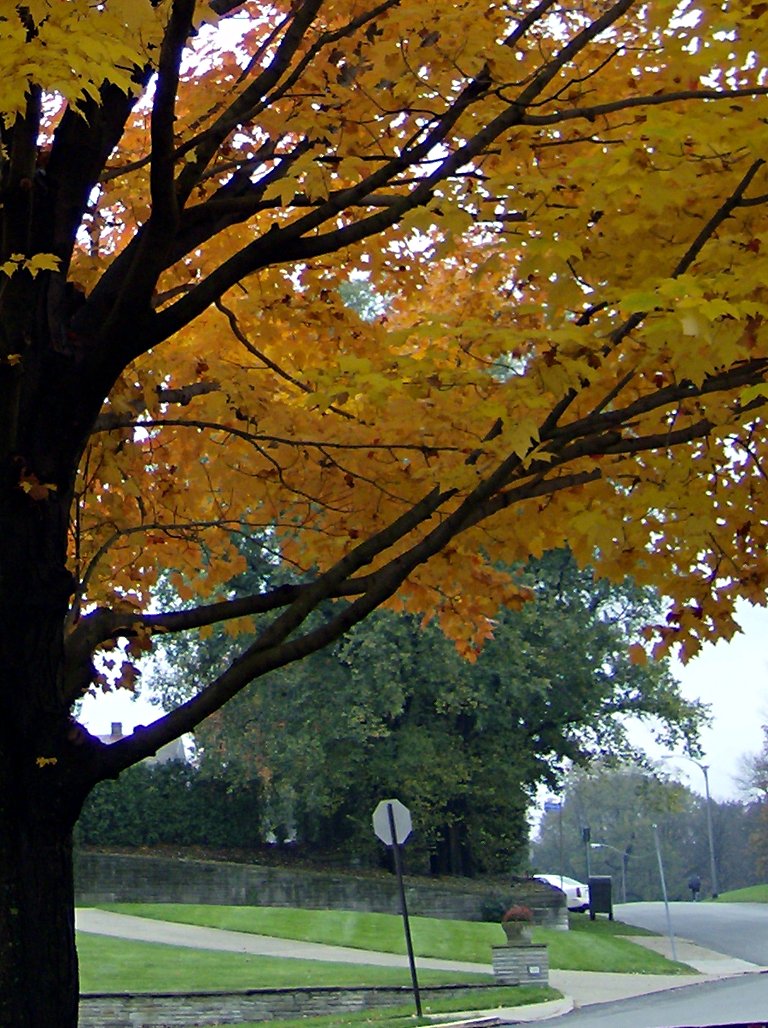Old Pa Pitt has mentioned before that the columns surrounding the Mellon Institute in Oakland are supposedly the tallest monolithic columns in the world. But how big are they? For perspective, here is a woman sitting in front of them and talking on a cell phone. Can you spot her? Click on the picture to make it much bigger.
-
Mellon Institute
-
Oakland
The crowded clutter of university and medical buildings that makes up central Oakland. If downtown is the heart of Pittsburgh, this is the brain, with three universities, two important museums, and a labyrinthine medical-research complex that covers several city blocks interconnected with pedestrian bridges. This view is looking toward the north, with Halket Street running diagonally in the foreground.
-
Edward Manning Bigelow
Edward Manning Bigelow was, by all accounts, as corrupt as any other Pittsburgh politician of his day. But he had two things that earn him a place in history: a vision of Pittsburgh as a great city, and a silver tongue with little old ladies. Seeing that Pittsburgh was rapidly expanding to the east, he determined that a great city must have a great park. Right in the way of the eastward expansion was Mary Schenley’s broad expanse of empty land. Mary Schenley was heiress to the O’Hara glass fortune, but she had abandoned Pittsburgh and moved to England. Bigelow went there and persuaded her to donate her land to the city. In her honor, we call it Schenley Park, and—just as Bigelow imagined it—it’s a beautiful oasis of fields, forests, and art in the middle of the city. One of those works of art is this statue of Bigelow himself, which stands in the middle of the street in front of Phipps Conservatory. Here we see it surrounded by the golden late-fall leaves of Ginkgo biloba.
-
Autumn Leaves in Schenley Park
-
Oakland Panorama
-
Low-Tech Film Scanner
If you look through Father Pitt’s archives, you may see that Father Pitt used to do many of his pictures on film with a motley collection of ancient cameras. Lately those cameras have not seen much use, largely because Father Pitt’s old transparency scanner died, and it’s expensive to get a scanner that handles medium-format film.
A while ago old Pa Pitt heard of a photographer who used a light table and a digital camera to digitize large-format negatives. Would the same technique work for medium-format negatives? It might, but would one want to invest in a decent light table without knowing that it would? It would be better to have some proof of concept, as an engineer might say. If only it were possible to create an inexpensive light table, good enough to try out the idea and see whether it might work…
Father Pitt stared for an hour at the screen on his laptop computer, looking through various Web sites for ideas for a home-made light table. They all seemed to require materials that would cost almost as much as a commercial light table.
And then, after many sites, a light bulb suddenly lit up over Pa Pitt’s head. He was staring at a laptop screen. A laptop screen is a backlit flat surface. If we open up a blank text document and maximize it to fill the screen, we have a light table. Father Pitt was tempted to slap his forehead, but feared the effects on his periwig.

Here’s a picture of the Westinghouse Memorial in Schenley Park, taken on 120 film and digitized with the laptop light table and a digital camera. Obviously the laptop light table is not a permanent solution: you can see the pixel grid too clearly. But for a quick look at what’s on the negative, it works surprisingly well. More importantly, it shows that a proper light table would probably be just as good as a mid-priced film scanner, and much cheaper.
So Father Pitt’s 620 Special and his Speedex and all his other favorite cameras can come out of their forced retirement. It turns out that there’s an astonishingly cheap and simple way to digitize medium-format film.

-
Oakland in the Snow
-
A Stroll in Schenley Park

The Bob O’Connor Golf Course at Schenley Park, like the rest of the city, was quickly covered with eight inches of snow overnight. The next day, the snow was still fresh and untouched, except where the occasional adventurous walker had made a path through it.
-
Cathedral of Learning in the Snow

It’s been snowing just a little every day, just enough to keep the snow beautiful all over the city.
-
Phipps by Night

A massive glass sculpture by Dale Chihuly hangs in the dome of the entrance to Phipps Conservatory. The conservatory is open until 10:00 Friday nights.










